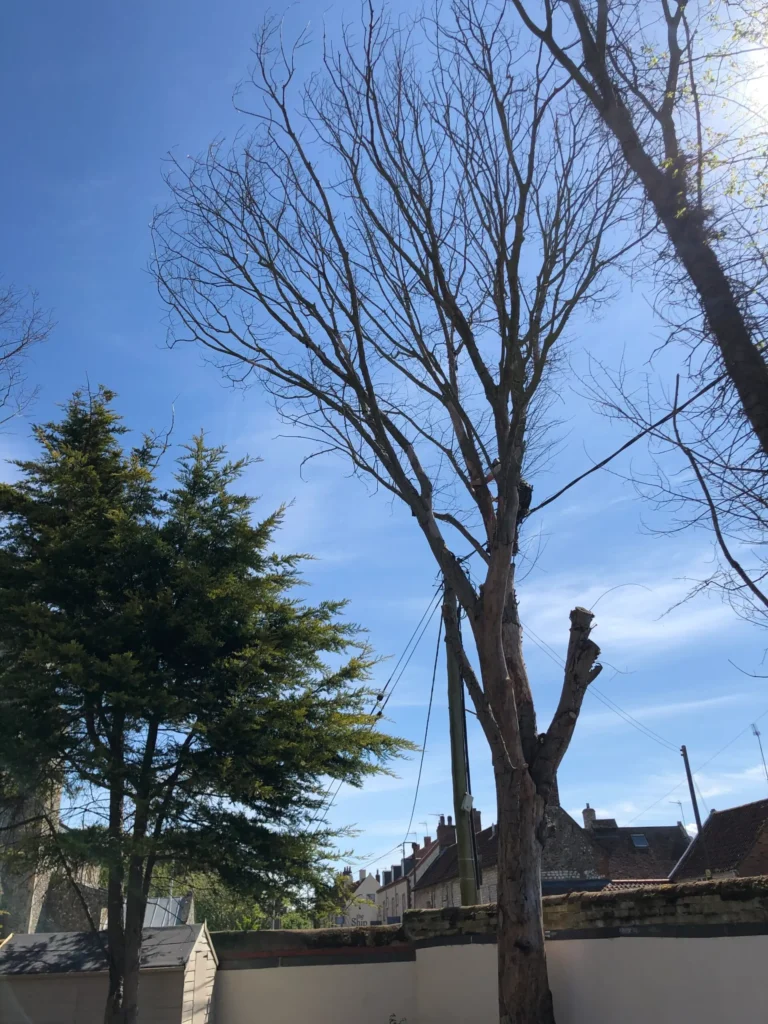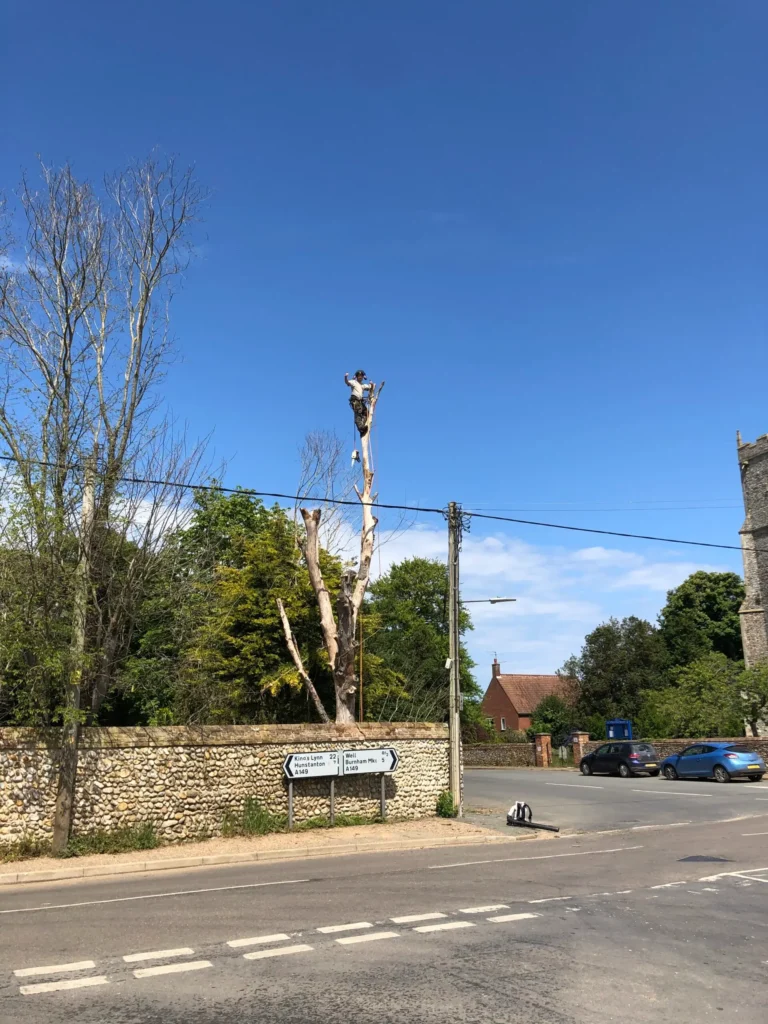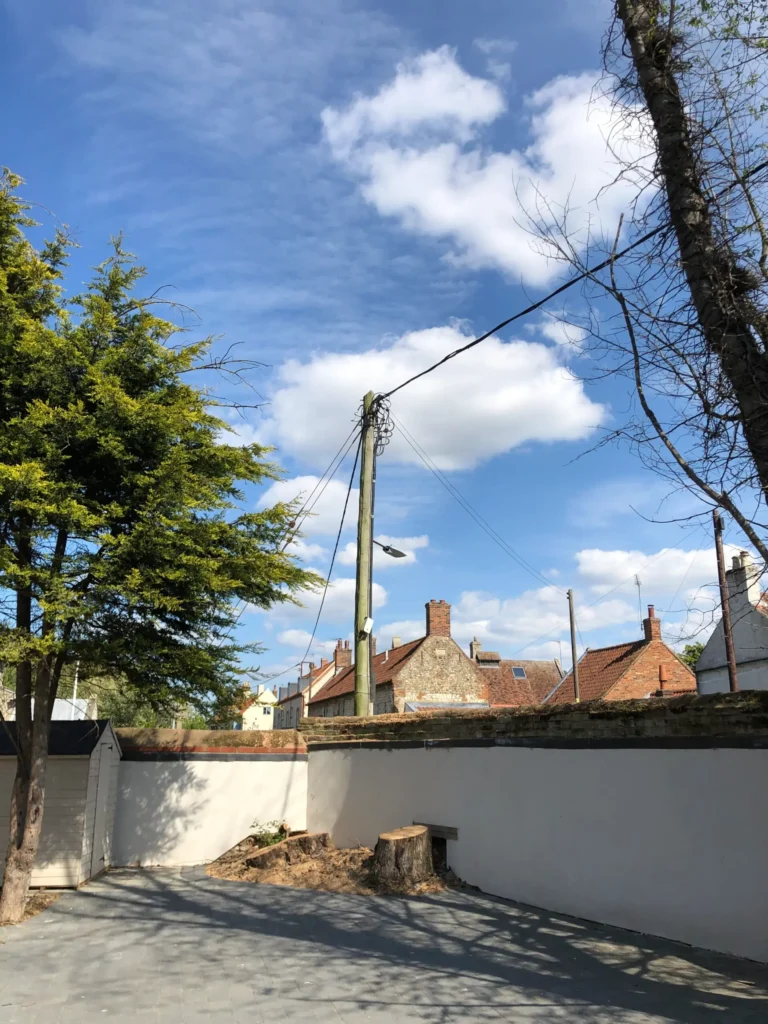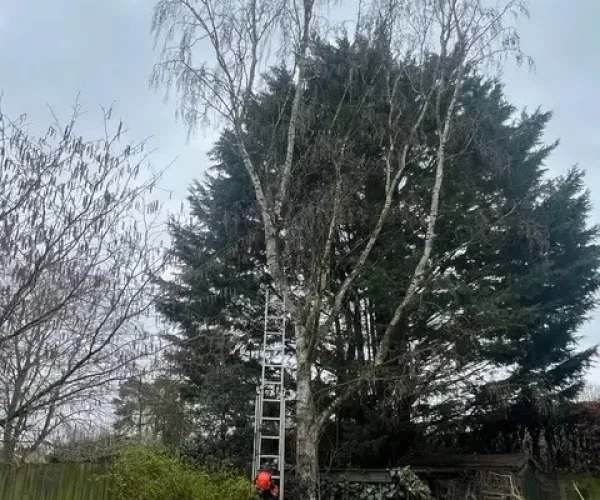After a routine tree survey identified a dead elm tree with fungal decay beside high‑voltage lines, Top Garden Services was asked to remove it for a parish council in East Anglia. Dead trees are unstable and can have structural defects that make them likely to fail partially or completely. The U.S. Forest Service warns that hazard trees may have broken tops, basal scars and fungal conks, and that limbs and damaged trees can fall without warning; trees without needles, bark or limbs may have internal rot. When such a tree overhangs a public footpath and electric cables, the risk to residents and passing pedestrians becomes unacceptable.
Why Remove Dead Elms?
Dutch elm disease has devastated elm populations across the UK. Once an elm is infected and dies, the brittle wood quickly decays. Hazard trees with internal rot or basal scars can drop limbs in a storm or even collapse in calm weather. Removing dead or diseased elms helps prevent injury, property damage and the spread of disease; some councils, such as in Saskatchewan, advise that broken or hazardous branches or entire trees should be removed promptly and disposed of properly. Because dead elms attract elm bark beetles, the stump must be removed or treated to prevent new beetle infestations.
Safety Challenges Near Power Lines
Removing a tree close to overhead lines is inherently risky. American arborists note that removing trees near power lines is extremely dangerous and requires professional knowledge and experience. Primary distribution lines can carry 2,300 – 39,000 volts, and electricity can arc from the wires to a nearby tree or tool. Work within 10 feet of energized lines should only be done by OSHA‑certified line‑clearance tree trimmers. Improper work around live wires can result in electrocution, which accounts for a significant share of tree‑care fatalities.


Our Approach
- Planning and coordination – Our surveyors liaised with the local electricity network to confirm voltages and safe working distances. We cordoned off the area to keep residents and pedestrians away and obtained any necessary permits.
- Climbing and rigging – Because of the limited access and proximity to power lines, a crane was impractical. Our qualified arborist climbed the dead elm using rope and harness, staying clear of the live wires. Limbs were removed systematically from the top down and rigged to lower them safely to the ground.
- Piece‑by‑piece removal – Once the crown was reduced, the main stem was sectioned and lowered in controlled pieces. This ensured nothing contacted the lines or nearby property. Team members on the ground chipped brush and loaded timber onto our lorry for disposal.
- Stump removal and site restoration – To prevent elm bark beetle breeding, we removed the stump and treated the site. The area was cleared of debris and left level and tidy for public use.
Throughout the operation we used personal protective equipment,
Results and Benefits
The removal eliminated an immediate safety hazard for residents and protected nearby power infrastructure. By coordinating with the utility provider and carefully dismantling the tree, we prevented potential outages and injuries. The parish council now has peace of mind that the area is safe for public use. Proper disposal and stump removal also reduce the risk of Dutch elm disease spreading.

Why Choose Top Garden Services?
- Experienced arborists – Our team holds relevant certifications for tree surgery and line‑clearance work. We understand the dangers of working near electricity and plan each job accordingly.
- Safety‑focused – We adhere to industry guidance on tree care hazards and only undertake work we are qualified to perform. Safety of the public and our staff is paramount.
- Specialist equipment – We invest in climbing gear, rigging and chippers to manage difficult removals without damaging property or utilities.
- Comprehensive services – From routine grounds maintenance and grass cutting to emergency tree removal and stump grinding, we support councils, businesses and homeowners across Norfolk and Suffolk.
If you have a dead or dangerous tree on your pr



